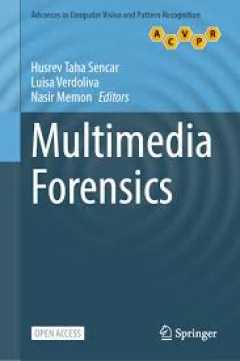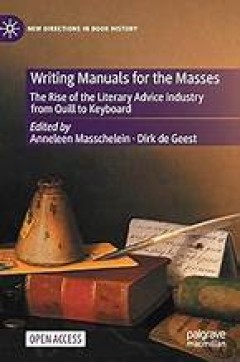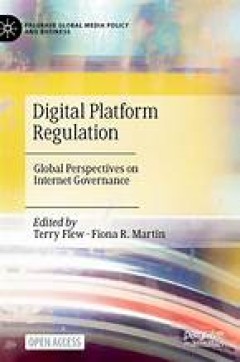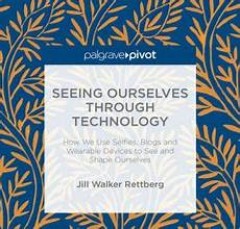Filter by

Families and New Media: Comparative Perspectives on Digital Transformations i…
The open access edited volume addresses children’s rights and their ability to act in the digital world. The focus is on the position of children as subjects with their own rights and developing capacities. Their consideration by parents, courts and legislators is critically examined. Aspects of digital parenting, especially educational practices and strategies in the context of social media,…
- Edition
- 1
- ISBN/ISSN
- 9783658396640
- Collation
- XV, 272 hlm,: ill, lamp;
- Series Title
- -
- Call Number
- -

Multimedia Forensics
This book is open access. Media forensics has never been more relevant to societal life. Not only media content represents an ever-increasing share of the data traveling on the net and the preferred communications means for most users, it has also become integral part of most innovative applications in the digital information ecosystem that serves various sectors of society, from the entertainm…
- Edition
- -
- ISBN/ISSN
- 978-981-16-7621-5
- Collation
- XII, 490
- Series Title
- -
- Call Number
- -

Drones and the Creative Industry :Innovative Strategies for European SMEs
This open access, interdisciplinary book presents innovative strategies in the use of civil drones in the cultural and creative industry. Specially aimed at small and medium-sized enterprises (SMEs), the book offers valuable insights from the fields of marketing, engineering, arts and management. With contributions from experts representing varied interests throughout the creative industry, inc…
- Edition
- 1
- ISBN/ISSN
- 9783319952611
- Collation
- X, 161 hlm,: ill, lamp;
- Series Title
- -
- Call Number
- -

Translation im Kontext
Welche Rolle spielen Kontext und Kontextualisierung beim Übersetzen und Dolmetschen? Und welche Auswirkungen haben sie auf die Rezeption des Translats? Die Relevanz des Kontextes sowohl für die Anfertigung von Translaten als auch für deren Wahrnehmung ist unbestritten. Doch wie unterschiedlich und komplex die diversen Kontexte zusammenwirken, zeigt erst die vertiefte Analyse. Daneben ste…
- Edition
- 1
- ISBN/ISSN
- 978-3-7329-8911-9
- Collation
- 388
- Series Title
- TRANSÜD. Arbeiten zur Theorie und Praxis des Übersetzens und Dolmetschens
- Call Number
- -

Multi-dimensional Approaches Towards New Technology
This open access edited book captures the complexities and conflicts arising at the interface of intellectual property rights (IPR) and competition law. To do so, it discusses four specific themes: (a) policies governing functioning of standard setting organizations (SSOs), transparency and incentivising future innovation; (b) issue of royalties for standard essential patents (SEPs) and related…
- Edition
- 1
- ISBN/ISSN
- 9789811312311
- Collation
- XXV, 337 hlm,: ill, lamp;
- Series Title
- -
- Call Number
- -

Writing Manuals for the Masses
This open access collection of essays examines the literary advice industry since its emergence in Anglo-American literary culture in the mid-nineteenth century within the context of the professionalization of the literary field and the continued debate on creative writing as art and craft. Often dismissed as commercial and stereotypical by authors and specialists alike, literary advice has non…
- Edition
- 1
- ISBN/ISSN
- 978-3-030-53614-5
- Collation
- -
- Series Title
- New Directions in Book History
- Call Number
- XXII, 412

Digital Platform Regulation
This Open Access volume provides an in-depth exploration of global policy and governance issues related to digital platform regulation. With an international ensemble of contributors, the volume has at its heard the question: what would actually be involved in digital platform regulation?’. Once a specialised and niche field within internet and digital media studies, internet governance has i…
- Edition
- 1
- ISBN/ISSN
- 978-3-030-95220-4
- Collation
- -
- Series Title
- Palgrave Global Media Policy and Business
- Call Number
- XVII, 319

Seeing Ourselves Through Technology
This book is open access under a CC BY license. Selfies, blogs and lifelogging devices help us understand ourselves, building on long histories of written, visual and quantitative modes of self-representations. This book uses examples to explore the balance between using technology to see ourselves and allowing our machines to tell us who we are.
- Edition
- 1
- ISBN/ISSN
- 978-1-137-47666-1
- Collation
- -
- Series Title
- -
- Call Number
- Palgrave Macmillan London

Kollektive Informationsverarbeitung von Medieninhalten: Theoriebildung, Metho…
Das vorliegende Open-Access-Buch leistet einen zusammenhängenden theoretischen, methodischen und empirischen Beitrag zum Verständnis von Informationsverarbeitung in Gruppen. Menschen nutzen und verarbeiten Medieninhalte häufig gemeinsam. Trotzdem gibt es erst wenig und vornehmlich auf die Individualebene fokussierte Forschung zu kollektiver Medienrezeption bzw. kollektiver Informationsverarb…
- Edition
- -
- ISBN/ISSN
- 9783658425333
- Collation
- XVII, 265
- Series Title
- -
- Call Number
- -

mHealth Innovation in Asia
This open access book offers a detailed account of a range of mHealth initiatives across South, Southeast and East Asia. It provides readers with deep insights into the challenges such initiatives face on the ground, and a view of the diverse cultural contexts shaping strategies for overcoming these challenges. The book brings together various discussions on the broader mHealth literature, and …
- Edition
- 1
- ISBN/ISSN
- 978-94-024-1251-2
- Collation
- -
- Series Title
- Mobile Communication in Asia: Local Insights, Global Implications
- Call Number
- X, 131
 Computer Science, Information & General Works
Computer Science, Information & General Works  Philosophy & Psychology
Philosophy & Psychology  Religion
Religion  Social Sciences
Social Sciences  Language
Language  Pure Science
Pure Science  Applied Sciences
Applied Sciences  Art & Recreation
Art & Recreation  Literature
Literature  History & Geography
History & Geography